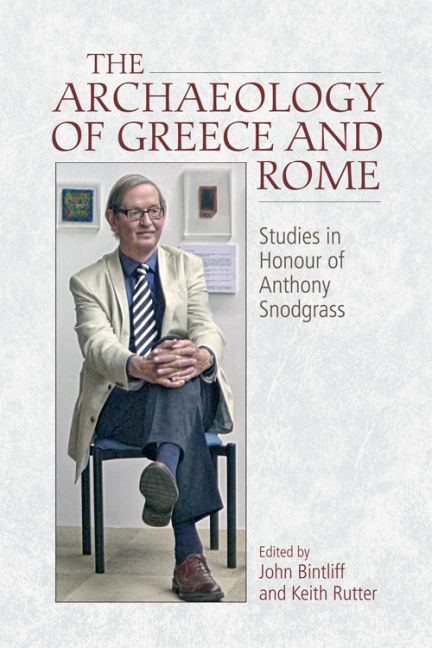Book contents
- Frontmatter
- Contents
- Preface
- List of Contributors
- List of Abbreviations
- Section I Prehistory
- Section II Around Homer
- Section III The Archaic and Classical Greek World
- Section IV The Greeks and their Neighbours
- Section V The Roman and Much Wider World
- 15 Loropéni and Other Large Enclosed Sites in the South-West of Burkina Faso: An Outside Archaeological View
- 16 The Poetics of Ruins in Ancient Greece and Rome
- 17 Context Matters: Pliny's Phryges and the Basilica Paulli in Rome
- Section VI The Scholar in the University and in the Field: Personal Histories
- Index
17 - Context Matters: Pliny's Phryges and the Basilica Paulli in Rome
from Section V The Roman and Much Wider World
Published online by Cambridge University Press: 26 May 2017
- Frontmatter
- Contents
- Preface
- List of Contributors
- List of Abbreviations
- Section I Prehistory
- Section II Around Homer
- Section III The Archaic and Classical Greek World
- Section IV The Greeks and their Neighbours
- Section V The Roman and Much Wider World
- 15 Loropéni and Other Large Enclosed Sites in the South-West of Burkina Faso: An Outside Archaeological View
- 16 The Poetics of Ruins in Ancient Greece and Rome
- 17 Context Matters: Pliny's Phryges and the Basilica Paulli in Rome
- Section VI The Scholar in the University and in the Field: Personal Histories
- Index
Summary
Three years with Anthony in Cambridge (1998–2001), at and beyond the Faculty of Classics, have left a profound impression on me. Remembering vivid debates with him I will here ride a hobby horse that both of us share. It concerns the multiple relationship and reading of image, text and context or, in other words, art, archaeology, philology and history. By tackling this, I will re-open an issue touched upon in my book Bunte Barbaren (1986: 115–25). My argument is twofold: one strand is the archaeology of the Basilica Paulli (for the name, see below), built on the Forum Romanum in Rome; the other is a misread passage in Pliny's Natural History (XXXVI.102) on this building. I will begin my study as an archaeologist and art historian who examines the architecture, sculpture and history of the Basilica Paulli. Next, I will become a philologist who analyses Pliny's passage within its textual tradition and reading of Classical scholarship. Then I will confront the outcome of both and discuss concurrences, differences and blind spots. Finally, I will sketch out a historical framework, which is based not on the deficient premise of the intentional reading, but on the practice of intentional readings within the wider context of ‘intentionaler Geschichte’ (Gehrke 2014: 9–36). Before I go on, however, I need to clarify a problem of terminology. Whenever I speak of statues of Asians and Asian dress, I refer not to all peoples of Asia but to those of Asia Minor and the Near East.
Archaeology and history
In the nineteenth century, remains on the north-eastern side of the Forum Romanum were identified as belonging to the Basilica Paulli (Chioffi 1996: 34–5; Fig. 17.18 below), which had been situated opposite the Basilica Iulia. This identification had been based on ancient texts which are, however, ambiguous in their reading. They attest in the Forum Romanum either a single Basilica Fulvia-Aemilia-Paulli (communis opinio) or two separate basilicas, namely an archaeologically unverified Basilica Aemilia and the verified Basilica Fulvia-Paulli. The latter is here called the Basilica Paulli and not the Basilica Aemilia, which is what, confusingly, most scholars have called it.
- Type
- Chapter
- Information
- The Archaeology of Greece and RomeStudies In Honour of Anthony Snodgrass, pp. 402 - 434Publisher: Edinburgh University PressPrint publication year: 2016

